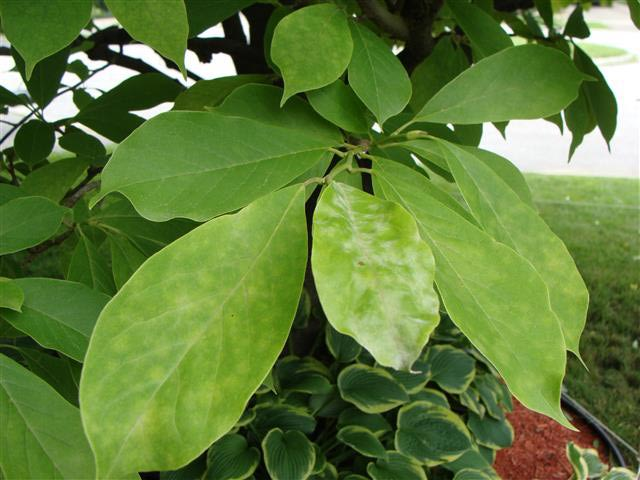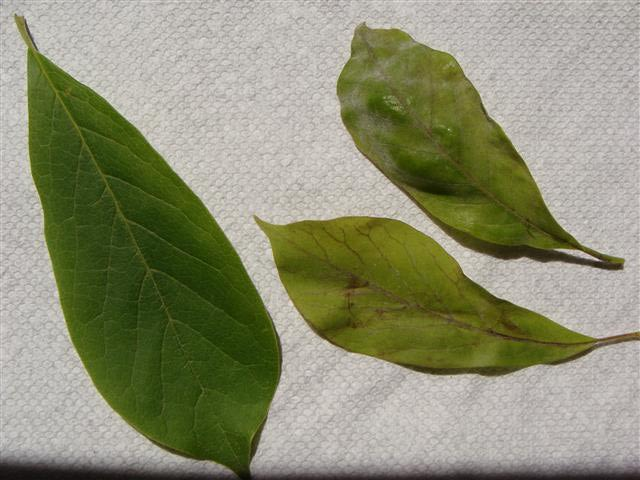Question
 Magnolia leaves
Magnolia leaves  Magnolia leaves
Magnolia leaves
We have a mature Magnolia tree (over 20 yrs. old) in our front yard. For the last week or so it has suddenly been dropping leaves as if it were fall and it is only July. It has been a healthy tree but 3 years ago it developed scale which we had treated and followed up with further treatments as directed. The following year, and this year, we have not seen any further signs of scale. It had a very healthy display of flowers this year so it seemed to be fine. The leaves seem to be losing their usual dark green color and are turning lighter, some almost looking yellowish, There is also what looks like some kind of mildew on some leaves.I'm afraid that at the rate the leaves are dropping the tree could be looking bare in a month or so. I hope you can help us out with a solution for this as we are quite concerned about it. Thank you
AnswerIF you have not applied any kind of herbicide near the tree (Weed and Feed fertilizer for lawns is one of these) then it seems to be a soil problem. It appears that your Magnolia has chlorosis which should be treated with iron chelates. Magnolias appreciate fairly rich, well drained neutral to slightly acid soil. The chlorosis of your Magnolia suggests the soil is somewhat alkaline.
The two principal types of iron-containing materials are iron chelates, organic in nature, and inorganic compounds in soluble form such as ferrous sulfate. Iron chelates are marketed under various trade names and in various formulations. The iron in chelates remains available to plants when the chelates are placed in the soil. Some formulations of iron chelate can be applied to the foliage; however, this approach is usually not as permanent as soil applications. Follow the manufacturer's recommendations for amount of use. Some fertilizers contain iron chelates, and use of these with plants susceptible to iron deficiency is recommended.
Ferrous sulfate can also be applied to the soil or foliage. For foliar application, use 2 1/2 ounces of ferrous sulfate in 3 gallons of water. This treatment will probably require reapplication a number of times. A convenient way to determine how much ferrous sulfate is needed for soil application is to measure the diameter of the periphery of the tree at the drip line (ends of branches#. If the treatment is made when the trees or shrubs are dormant, use 1 gallon of ferrous sulfate solution #1 pound of ferrous sulfate per gallon of water) for each foot of the diameter of the periphery. If the treatment is made during the growing season, use 1/2 gallon per foot diameter. The solution can be applied over the surface of the soil; however, it's more effective if holes are drilled and the solution poured in. Drill holes 3 feet apart around the periphery and deep enough to hold 1/2 to 1 gallon of solution.
I would also recommend that you use a fertilizer to stimulate the growth. Here is a web link to information on fertilizing trees.
http://ohioline.osu.edu/hyg-fact/1000/1002.html







